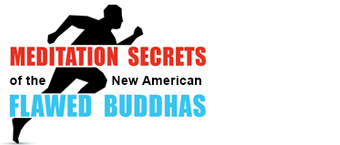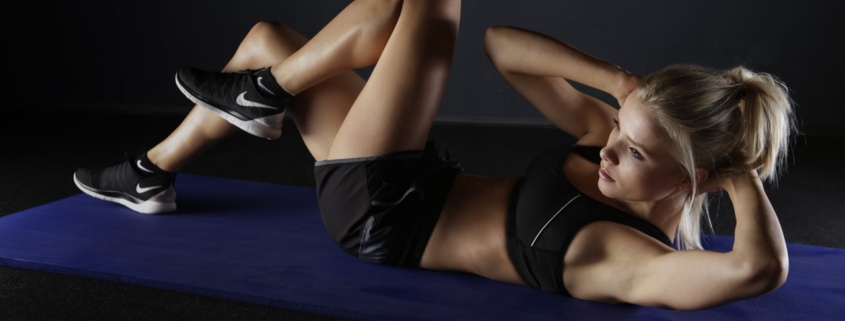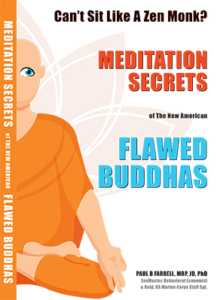Last Updated on March 19, 2021 by Paul Farrell, MRP, JD, PhD

Sports-Fitness Zone: The #1 “Meditation” for 80% of American men & women!
“According to an old Taoist saying, ‘meditation in action is a hundred times, no, a thousand times, no, a million times greater than meditation in stillness’ … “Every aspect of living might well benefit from the simplest and most profound practices known on this planet. There are indeed many activities that easily lend themselves to meditation in action: walking, dressing, bathing, doing any repetitive task!”
– George Leonard, Mastery, The Way of Aikido
The contrast between Herbert Benson’s “Relaxation Response” and Jim Loehr’s “Challenge Response” offers us critical insight into why action-oriented meditations work better for most people rather than passive sitting meditation. Like many in the business world, I thought there was something wrong because I just could not do any sitting meditation. Seems I tried all of them for years, they just didn’t work.
Gradually, I realized that sitting doesn’t work for most people. In fact, 80% of all Americans won’t sit. I was normal! Sitting is just not the best way of meditating for most personality types as I discovered in working on The Millionaire Code, my book on how different personality types approach life in general, wealth-building, meditation and stress management more specifically.
To Reduce Stress, Get Into Action!
The business world owes a lot to Dr. Herbert Benson. In 1975, The Relaxation Response reintroduced America to meditation as it had been practiced for centuries in other cultures, from Buddhism 2,500 years ago to today’s contemporary Transcendental Meditation. Benson helped us see the power of meditation in reducing the negative effects of stress on our bodies and minds.
In everyday language Benson told us how sitting meditation works, gave us a layman’s scientific basis, and most important, he put meditation in a new, acceptable package—the “relaxation response”—which separated meditation from any negative associations with the hippy counter-culture of his day and popularized meditation with the general public.
Mental Toughness : Your Challenge To Peak Performance
Dr. Loehr, on the other hand, is a sports psychologist and author of 1995 The New Mental Toughness Training for Sports and The Mental Game: Winning at Pressure Tennis and Stress for Success. Like all sport psychologists, physical fitness trainers, team coaches and other professionals working with athletes, Loehr’s clients are high-energy, action-oriented individuals who naturally respond to more active methods of meditation, rather than Benson’s sitting meditations, which rely more on mental skills. Loehr’s description of the challenge response is in marked contrast to Benson’s approach:
“The final stage of mental toughness is reflected in the challenge response. You actually find yourself investing more positive intensity, more of yourself as the situation gets tougher. You find that problems you face in competition are not threatening but stimulating. You’ve gone well beyond simply loving to win. You have clearly come to love the battle. As a result of this emotional response, you have become an excellent problem solver. When everyone else is heading for the trenches as the problems start mounting, you smile inside because you know you got the emotional edge.”
The contrast between these two approaches is enormous. Benson comes from the perspective of traditional medicine, relying on the past, integrating age-old meditation tools. Loehr and other sports psychologists start with a fresh perspective built on modern science, looking to the future.
In addition, Benson focuses on creating the mind-body response of relaxation—slowing down, letting go, calm and peace. Loehr is at the opposite end of the spectrum, he focuses on the opposite mind-body response of challenge—intensity, stimulation, toughness and competition.
The Two-Phase Cycle : First Stress, Then Recovery
Both of them are dealing with the same well-known human cycle: Action, stress and performance followed by relaxation, rest and recovery. One natural cycle, two phases. As a result, Benson’s emphasis on the relaxation phase of the cycle results in a preference for sitting meditation and mental processes. His goal is to condition the mind to better function in the real world when it returns to the action phase, but the emphasis is clearly on the relaxation phase.
Loehr’s emphasis, on the other hand, is on the challenge phase of this natural cycle with in a strong preference for action-oriented moving meditations that are better suited for athletes. Similarly, Loehr deals with the relaxation phase as part of the total natural cycle of action and relaxation.
Stress is a Source Of Positive Energy
Perhaps the most important distinctions here, however, is that the approach of sports psychologists like Loehr is wholistic—dealing with the whole person, focusing on the whole cycle. Their approach not only sees stress as a positive source of energy, they create training cycles (“wave-making”) designed to increase a person’s capacity to handle stress (“toughness”) by alternating between action and stress followed by rest and recovery.
Here’s how Loehr describes these ideas in Toughness Training for Sports: “To fully understand how stress and recovery relate to the toughening process, we need some working definitions. In the Toughness Training contest, stress is anything that causes energy to be expended; recovery is anything that causes energy to be recaptured.”
In other words, the whole cycle of stress and recovery is part of the process in sports psychology approach: “Physical stress occurs when you expend energy in moving muscles; mental stress happens when you expend energy in thinking and concentrating; emotional stress comes when you expend energy in feeling fear, anger and other emotions. Physical stress is running a race; mental energy is thinking about race tactics; emotional stress is worrying about how you’re going to do in the race.”
Training for Toughness : Building on “Waves” Of Stress & Recovery
In addition, recovery works at all three levels: “Recovery simply means rest. When you rest, you temporarily break episodes of stress and allow energy to me restored.” Physically you get recovery by reducing muscle stimulation. Mentally breaking your concentration and reducing mental stimulation. And you create emotional recovery when you replace negative feelings, such as anger and fear with positive feelings of confidence and calm.
The ideal training is what Loehr calls “wave-making,” to increase your toughness to handle stress and enhance performance. The goal is for your coaches and trainers to create an optimum balance between increasing stress and pushing performance to new peaks without overtraining, coupled with periods of recovery to restore energy for the next wave.
Then come successive waves of stress and recovery, reaching for new peaks of performance, new levels of toughness, and in the process increasing a person’s capacity to deal with stress—mentally and emotionally as well as physically, a balanced approach to toughening the whole person.
In the short term each sport has its own stress-recovery cycle – tennis may be a ten-second stress mode and a twenty-second recovery. Golfers spend about ninety-five percent of the time between shots. Football varies with huddles, time-outs, half-times.
But the “critical factor in the big picture—how closely your recovery balances your stress over time.” Toughness training sees stress as positive, is designed to build your capacity to handle stress to your advantage. The training focuses on the total person over the long-term in multiple training cycles of stress and recovery, stress and recovery, stress and recovery, ad infinitum …..
The New Sports-Fitness Zone Where “Meditation-Is-Action” For Millions Of Americans
Is this meditation? Absolutely! This is meditation at its best. Even the action-oriented stress phase of the training cycle, although Loehr seems to refer to the recovery phase more as meditation when he breaks down recovery into active and passive forms of recovery: “Active rest includes non-vigorous physical activities like that break the cycles of physical, emotional and mental stress.”
For a tennis player, active relaxation or meditation could be golf or frisbee. A swimmer might alternate by jogging or biking. A golfer might do yoga, tai chi or fish. Anything to break the cycle. Passive activities also break the cycle: “Laughing, meditation, watching TV or a movie, getting a massage, reading, deep breathing, taking an afternoon nap, having a whirlpool bath.” All of them are part of the recovery cycle.
Moreover, throughout Loehr’s book and in his organization’s Corporate Athlete programs there is considerable use of other meditation techniques in the training of executives and athletes: Visualization of sports programs, positive self-talk and affirmations, body scanning, and focusing on the here-and-now, all designed to increase a person’s capacity to handle stress, achieve peak performance and increase productivity.
Bottom line: Fitness training for sports and athletic events – as well as for recreation and health purposes – is emerging as the ideal way to meditate because it deals with the whole person, mentally and emotionally as well as physically. Yes, sitting meditation will always be the best way to meditate for certain personalities. However, it is primarily a mental exercise and not enough for action-oriented personalities who seem naturally drawn to the Sports Zone in search of ways to meditate – and they are finding a lot of them!
Yes, America is Very Much a Sports-Fitness and Health-Conscious Nation Of Meditators!
Statistical considerations: Based on our research on meditation and personality types, the 258,000,000 Americans engaged in action meditations is based on 80% of the 2017 U.S. population of 323 million. On the other hand, data on individual participation in the the various sports & fitness activities is from multiple resources, government statistical data bases, professional interest surveys, sports/fitness magazines circulation reports and media sources.
In fact, many individuals participate in multiple sports-fitness activities, as well as the three other major zones of meditation, the creativity, relationships and traditional zones. In addition, overlapping participation in multiple activities also explains why the total of all the total participation in the Sports-Fitness Zone alone exceeds the entire population of the United States by over a hundred million.
About the Author
Dr. Farrell is a Behavioral Economist. His books include The Millionaire Code; The Millionaire Meditation: Stress Management for Wall Street, Corporate America & Entrepreneurs; The Zen Millionaire; The Winning Portfolio; Expert Investing on The Net; Mutual Funds on The Net; and The Lazy Person’s Guide to Investing.
He also published 1,643 columns on DowJones-MarketWatch and for years was their #1 traffic-generating columnist. Before the Internet, he edited & published FNX: Future News Index, a financial newsletter for stock market traders. Earlier he was a Wall Street investment banker with Morgan Stanley, Executive Vice President of the Financial News Network; and Associate Editor of the Los Angeles Herald Examiner.
He has a Doctorate in Psychology, Juris Doctor, Masters in Regional Planning and Bachelor of Architecture. He worked on the Esalen organic farm and served in the U.S. Marine Corps as Staff Sergeant in aviation computer technology.








